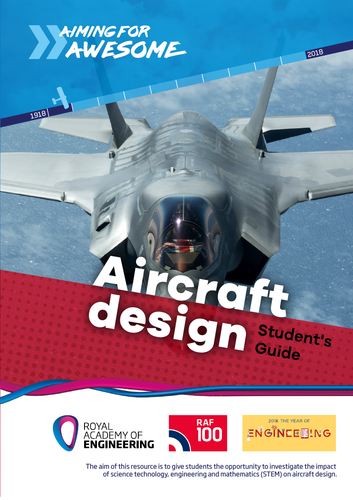




















The aim of this resource is to give students the opportunity to investigate the impact of science, technology, engineering and mathematics (STEM) on aircraft design.
Topics that can be delivered in your lessons include design and make challenges, the development of numeracy and literacy skills, and support for scientific principles such as: forces, sound and radio waves, and experimental skills and investigation.
The aim of the activities in this resource are to develop a better understanding of the ways engineers think and act using engineering habits of mind (EHoM).
Each resource is linked to the National Curriculum.
Please visit the STEM Resources area of the Royal Academy of Engineering’s website (found within the Education and Skills section) for a handy set of booklets and videos providing guidance on how to plan and use each of the activities.
- Aircraft design - gives students the opportunity to investigate the impact of STEM on aircraft design.
- Radar - gives students the opportunity to investigate the impact of STEM on radar technology.
- Speed record - gives students the opportunity to investigate the impact of STEM on the air speed record.
- Ejection seat - gives students the opportunity to investigate the impact of STEM on ejection seats.
- Code breaking - gives students the opportunity to investigate the impact of STEM on code breaking and security.
- Satellite age - gives students the opportunity to investigate the impact of STEM on satellite communications.
- Disaster relief - gives students the opportunity to investigate the impact of STEM on delivering humanitarian aid.
- Logistics challenge - gives students the opportunity to investigate how STEM is used when planning a mission.
- Remotely piloted air systems - gives students the opportunity to investigate the impact of STEM on the design, production and control of Remotely Piloted Aircraft Systems.
- Stealth - gives students the opportunity to investigate the impact of STEM on making stealth vehicles
Something went wrong, please try again later.
Report this resourceto let us know if it violates our terms and conditions.
Our customer service team will review your report and will be in touch.